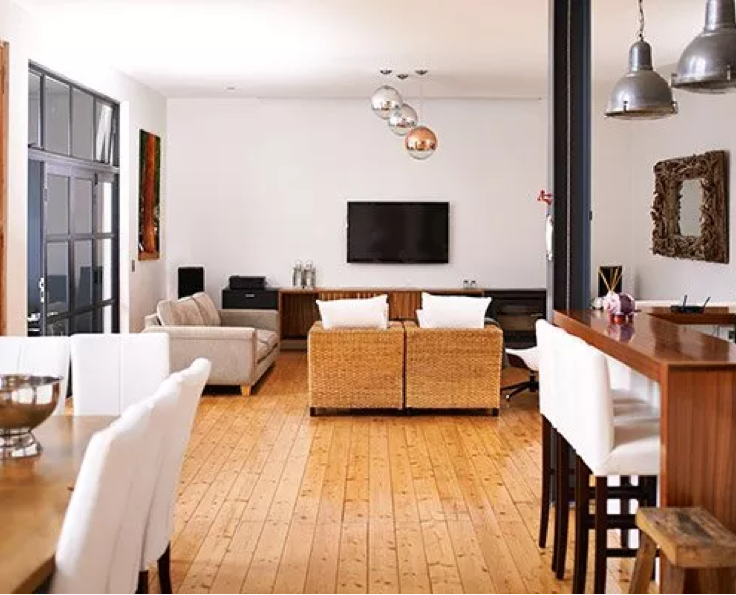What Is the Average House Contents Worth?
What Is the Average House Contents Worth?
*iSelect does not compare to all home and contents insurers in the market. The availability of policies may change from time to time. Not all policies made available from iSelect’s providers are compared by iSelect and due to commercial arrangements, area or availability, not all policies compared by iSelect will be available to all customers. See below for our range of home and contents insurers. Some policies are only available from iSelect’s call centre or online. Our advice on this website is of general nature and does not consider your situation or needs. Consider if any advice is appropriate for you before acting on it. Learn more.
Compare home and contents insurance the easy way*
Save time and effort by comparing a range of home and contents insurance policies with iSelect
What is the average value of home contents in Australia?
Calculating the value of your home contents and possessions
How much Contents Insurance do I need?
What else should I consider when getting Contents Insurance?
Where can I find Contents Insurance?
What is the average value of home contents in Australia?
While it’s a little like asking how long a piece of string is, 2019–2020 data has the average Aussie household at 3.1 bedrooms1Australian Bureau of Statistics – Housing Occupancy and Costs and non-financial assets (that’s contents and vehicles) at roughly $102,700.2Australian Bureau of Statistics – Household Income and Wealth, Australia Whether they choose to get all of that covered with their Contents Insurance is another question in itself.
Of course, there might be nothing average about your home contents; that’s why it’s worth estimating the worth of your contents rather than going with the norm. Otherwise, you might end up underinsuring them and only discovering that when it’s too late, or overinsuring them and paying unnecessarily high premiums.
Calculating the value of your home contents and possessions
Whether you rent a studio apartment or live in your own six-bedroom house, complete with granny flat, how you go about valuing your contents doesn’t change.
First off, you can try out our Home Contents Calculator. It’ll estimate your contents’ worth based off of your address and a few other pieces of information, like how many rooms there are and the general quality of your contents.
Alternatively, if you’re keen to delve a little deeper with your estimation, there’s three simple steps you can follow.

1. Make a list of what is in every room of your house
It’s time for a tour of your place! But to be systematic and thorough, you might want to take your time. For instance, consider starting in one room and noting down everything that’s in there that you would like to insure. That said, you may want to schedule in a tea break to keep your energy up if there’s a lot of rooms to work through.
As you’re inspecting each room, it could help to think about how many belongings you own and what kind of items they are, like if they’re technology or books. Similarly, you may want to note if your contents are in good condition or a little worn around the edges. Finally, you could consider having a separate column or note for items of special value. For example, this could be the antique dog statuette your grandparents left you (which you still haven’t found the right place to display yet).

2. Take photos of each room
Not only could taking a photo of the contents of each room in your house help you make your list, having photographic evidence of your belongings could come in handy when it’s time to make a claim. These photos may help to show what the item looked like prior to damage or to simply confirm you had it before it was stolen.

3. Keep receipts safe and organised
Receipts might make it a little easier to value specific items since they’ll list exactly what you paid for them. However, you might want to consider if the item has devalued over time. For instance, is your 2010 laptop still worth what you paid or has just the sentimental value held out? Once you’ve estimated your item’s value, it could be a good idea to hang onto the receipt still to use if you ever need to claim for the item.
You could also consider getting into the habit of keeping receipts when you buy anything new to help update your Contents Insurance Policy as needed. Just try not to put them somewhere so safe that you forget where they are!
Quick Tip
Our November 2023 survey of 1,000 Australians revealed that 42% of us aren’t regularly reviewing and updating our Contents Insurance every year, or even ever.3iSelect commissioned i-Link Research to conduct a national online survey between 2 November and 7 November 2023. The sample is n=1,000 Australians 18+ years, with data weighted to represent the population by age, state and gender, and is representative of all Australian adults 18+ Remember, when renewal time comes around, it can be an opportunity to let your insurer know if things have changed since you took out the policy. Perhaps you’ve downsized after the kids have flown the nest and Marie Kondo’d away a lot of your contents. Or, you might have finally started that fine art collection you’ve dreamed about for years.
Of course, you don’t have to wait until renewal time. You may like to get in touch with your insurer sooner.
How much Contents Insurance do I need?
It can be hard to know if you’ve found the sweet spot between being over and underinsured. You might find it helpful to consider what you want your contents to be insured against. For instance, while accidental damage from everyday life or theft may only affect a few different items at any given time, fire or flood could completely destroy all your belongings in one fell swoop.
So, although it can be tempting to underinsure to avoid higher premiums, this may not turn out to be a good strategy in the long run or even sooner. For instance, almost half of the 1,000 Australians we surveyed in November 2023 felt that their home wasn’t adequately insured for extreme events, like fire (or they didn’t even know!).4As above However, an El Nino event is expected for the 2023–24 summer, meaning the chance of severe heatwaves and higher bushfire risks. It was these conditions that contributed to the terrible Black Summer bushfires.5Insurance Council of Australia – It’s time to safeguard your home and be bushfire ready Put it altogether and it could mean devastating times are to come.
What else should I consider when getting Contents Insurance?
Nailing down the value of your home contents is a big part of getting Contents Insurance, but you’re not done quite yet.
- Policy inclusions: keep in mind that getting Contents Insurance isn’t like walking into your favourite takeaway joint and asking for a burger with the lot. You might want to consider what is most relevant to you and look for a policy that aligns with this.
- Location: your home may be on a flood plain or in an area at risk of bushfires, so you could want coverage for these kinds of events. Where you live and the risk of these events can also affect your premium.
- Excess: with a higher excess, you could find your premium is lower. But a higher excess also likely means paying more out of your own pocket. It can be a balancing act to get it to work with your budget and your insurance goals.
- Claim and payout history: bad luck can happen to anyone but a long history of it could increase your premium as insurers may think you’re more likely to claim than someone else.
If you’re feeling in an insuring mood, it could be worth checking out Home or Building Insurance too, whether you already have a policy or you’ve gone without. After all, if the contents of your house get damaged, it could very well mean your home takes a hit too. Of course, if you don’t actually own your home, this likely isn’t something you need to worry about.
Where can I find Contents Insurance?
It’s easy to let life admin, like insurance, slide. But there’s no time like the present to tick the job off your to-do list. And we can help make it faster so you can get back to what you want to be doing. With iSelect, you can compare a variety of Contents Insurance Policies from a selection of insurers.* You can use our online comparison tool now or call our team on 13 19 20.

.svg)






